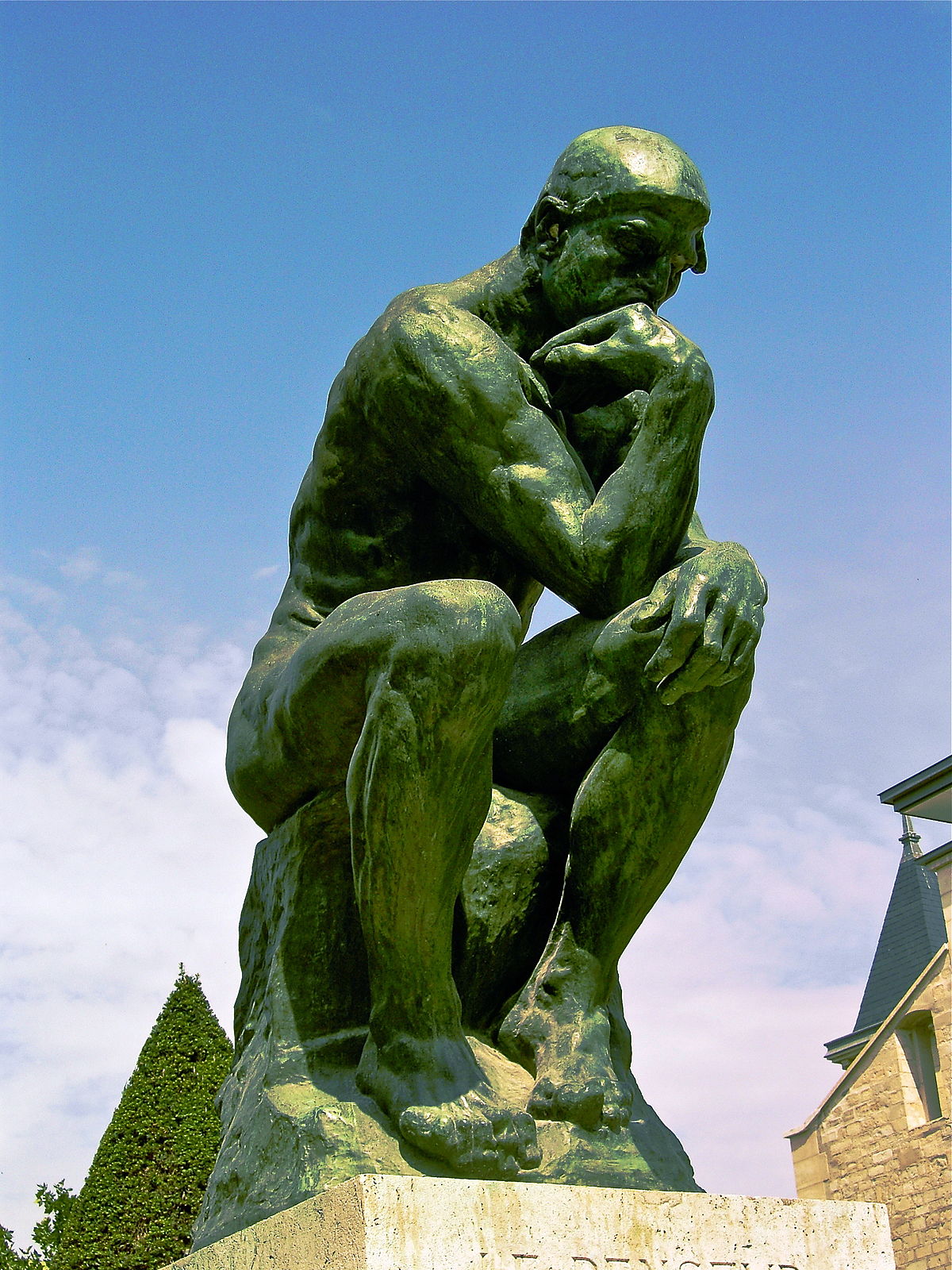1.7: Modernism and Symbolism
- Page ID
- 23566
Introduction: Modern Sculpture
Modern sculpture arose symbiotically with similar artistic trends in painting and drawing in Europe during the 1800s, lasting until around 1950. While there is some disagreement among scholars as to the exact time period and definition of the term, it can be said that modernist artistic movements share a common trait of breaking with past ideals. Typically, modernist artists were concerned with the representation of contemporary issues as opposed to grand historical and allegorical themes previously favored in art. The Realist movement of the 1850s is often considered the beginning of modern painting, while the work of Rodin is seen as the progenitor of modern sculpture.
Auguste Rodin
Modern sculpture is widely considered to have begun in the 1800s with the work of the French artist Auguste Rodin (1840-1917), who is seen as the forefather of the movement. Rodin is credited with ushering in a new approach and subject matter to the creation of sculpture. He did not expressly set out to do so, however, since he was a proponent of traditional artistic conventions. Rodin’s work signified a departure from the traditional themes of mythology and allegory prevalent during his time, and instead modeled the human body with intense realism, celebrating the individual character, psychological states, and physicality of his subjects.
Rodin was predominantly a naturalist and therefore concerned himself with character and emotion over monumental expression. He is known for turning away from the idealized traditions of the Greeks and decorative beauty of the Baroque and Neo-Baroque movements, thereby departing with centuries of tradition. Sculptural movements that developed as a result of Modernism include the following:
- Art Nouveau
- Cubism
- Geometric Abstraction
- De Stijl
- Suprematism
- Constructivism
- Dadaism
- Surrealism
- Futurism
- Formalism
- Abstract Expressionism
- Pop-Art
- Minimalism
Exposition Universelle
The Rodin exhibit at the 1900 Paris Exposition Universelle (world’s fair) is widely believed to be the precise beginning of the modern sculptural movement. At this exhibition, Rodin showed his works Burghers of Calais, Balzac, and debuted his Gates of Hell. Rodin’s sculptures at the World’s Fair exhibit were incredibly well received by the public, and quickly ushered him to the forefront of the artistic community as a world-renowned artist.
The Gates of Hell is a group of sculptures depicting scenes of physical and psychological turmoil from Dante’s Inferno in high relief . This work is comprised of 186 figures in its final form, including the renowned The Thinker . Many of Rodin’s most well-known sculptures started as designs for this piece.


The Burghers of Calais was first displayed in 1889 to great public acclaim. The sculpture is a monument to an event in 1347 during the Hundred Years War when Calais, an important French port, was under siege by the English. Originally a commission from the mayor of Calais for the town square, Rodin’s design was controversial as it did not present the burghers in a heroic manner; rather they appear worried and worn, perhaps struggling with their expected fates. The monument is considered innovative for its emotional portrayal as well as for being displayed at the same level as the viewers, without being raised on a traditional pedestal.
A Move Toward Meaning
Symbolism was a late 19th century art movement of French, Russian, and Belgian origin in poetry and other arts. The name “symbolist” itself was first applied by the critic Jean Moréas, who invented the term to distinguish the symbolists from the related decadent movement of literature and of art. Distinct from, but related to, the symbolist style of literature, symbolism of art is related to the gothic component of Romanticism
The term “symbolism” is derived from the word “symbol” which derives from the Latin symbolum, a symbol of faith, and symbolus, a sign of recognition. Symbolism was largely a reaction against naturalism and realism, anti-idealistic styles which were attempts to represent reality in its gritty particularity, and to elevate the humble and the ordinary over the ideal. Symbolism, on the other hand, favored spirituality, the imagination, and dreams.
Edvard Munch “The Storm”
[Smarthistory > Art in the 19th Century Europe > Symbolism & Art Nouveau > Munch, The Storm] The Storm, 1893, oil on canvas, 36 1/8 x 51 1/2″ (91.8 x 130.8 cm), (MoMA)Speakers: Dr. Juliana Kreinik, Dr. Amy Hamlin
An interactive or media element has been excluded from this version of the text. You can view it online here: pb.libretexts.org/art1/?p=37
Gustav Klimt “The Kiss”
[Smarthistory > Art in the 19th Century Europe > Symbolism & Art Nouveau > Klimt, The Kiss] The Kiss, 1907-8, oil and gold leaf on canvas, 180 x 180 cm (Österreichische Galerie Belvedere, Vienna)An interactive or media element has been excluded from this version of the text. You can view it online here: pb.libretexts.org/art1/?p=37
- Boundless Art History. “Modern Sculpture.” 21 July 2015. CC-BY-SA 4.0↵
- Boundless Art History. 21 Jul. 2015. CC BY-SA 4.0↵


